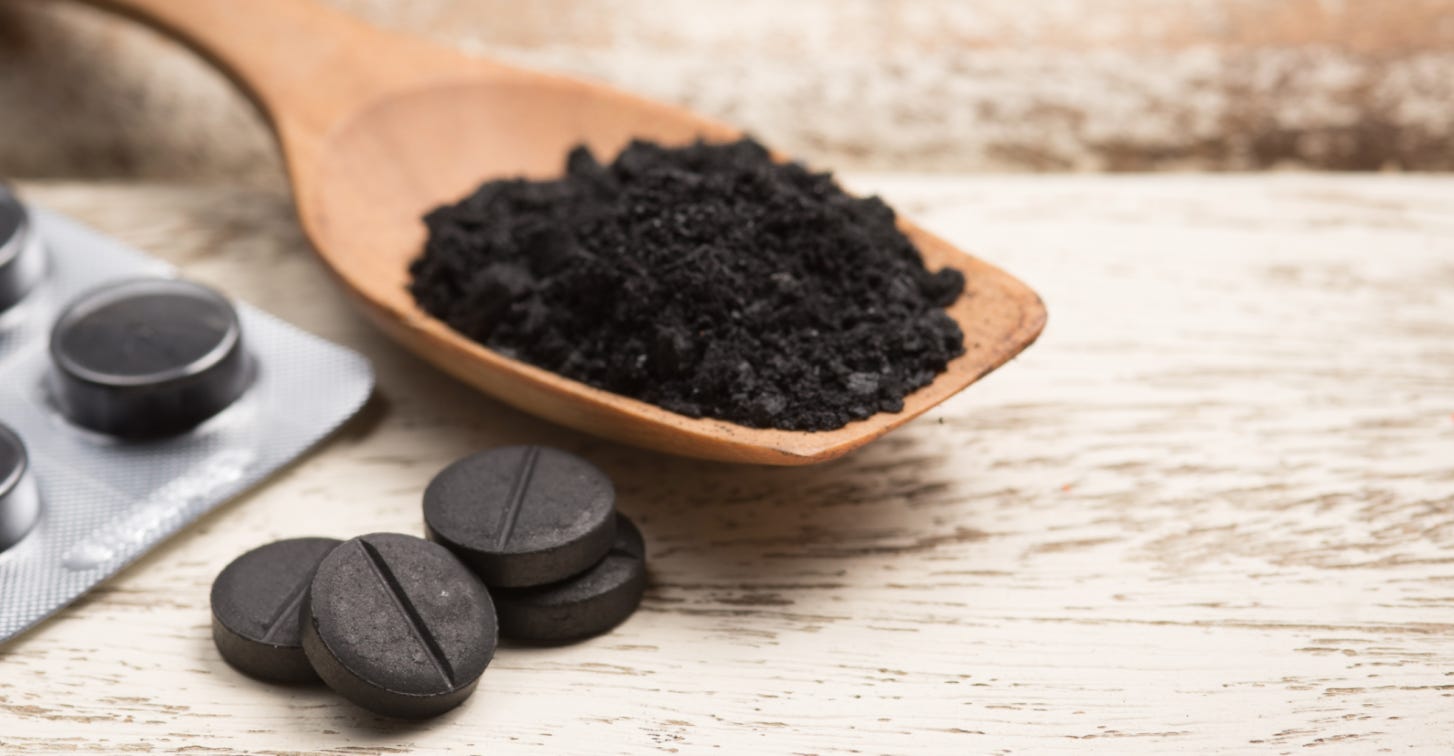|
A few years ago, I added activated charcoal to my routine. I can think of at least 500 perfectly valid reasons why I thought this was a good idea: White teeth, gut health, toxin absorption, better skin, and it was the cool thing to do, to name a few. But really, it all came down to the fact that activated charcoal is a potent natural remedy of the non-woo variety, and my never-ending need to step it up a notch thought taking a little was an excellent idea.
Activated charcoal is a fine black powder derived from many substances, the most popular being coconut shells. This type of charcoal becomes “activated” when heated to high temperatures — a process that removes previously adsorbed substances reduces particle size, and turns it into a porous final product that binds to toxins.
Once it has been “activated,” it has a negative charge that attracts positively charged toxins and gases, so the gut can’t absorb these substances. Since the charcoal isn’t absorbed, it carries everything it binds to out of the body.
Benefits of activated charcoal
I’m sure you’ve heard about using activated charcoal for chelation, but you might be surprised to learn that there are many other things it can do. Research and a few hundred years of observational data show that activated charcoal has numerous benefits:
Improves kidney function by binding to urinary toxins and slowing the progression of kidney disease.
Removes heavy metals from water (lead, cadmium, nickel, chromium, and zinc), protect against toxic environmental vapors, and “adsorbs” heavy metals and toxins inside the body.
Whitens teeth by gently removing stains caused by coffee, tea, and wine.
Improves gums by targeting toxins and plaque.
Alleviates bad breath and body odor.
Manages overdoses and poisoning.
Reduces bloating and gas by attaching to the substances in the intestine that produce it.
Lowers cholesterol by adsorbing bile acids and cholesterol and preventing their absorption by the intestine.
Alleviates digestive upset and prevents stomach bugs, food poisoning, and diarrhea.
Improves skin by removing impurities, toxins, and dead skin.
Reduces dandruff and removes impurities and toxins from the scalp.
Is an effective alternative to toxic deodorants.
Cleanses the entire digestive system.
Protects against harmful pathogens.
May ease heartburn, indigestion, and acid reflux.
May reduce inflammation by adsorbing pro-inflammatory cytokines.
This agent, presently somewhat neglected, has a wide spectrum of activity and when properly used is probably the most valuable single agent we possess. – Journal of Pediatrics
How to use activated charcoal ...
Subscribe to Megan Redshaw to read the rest.
Become a paying subscriber of Megan Redshaw to get access to this post and other subscriber-only content.
A subscription gets you:
| Subscriber-only posts and full archive | |
| Post comments and join the community | |
| Exclusive paid subscribers chat thread with Megan |
